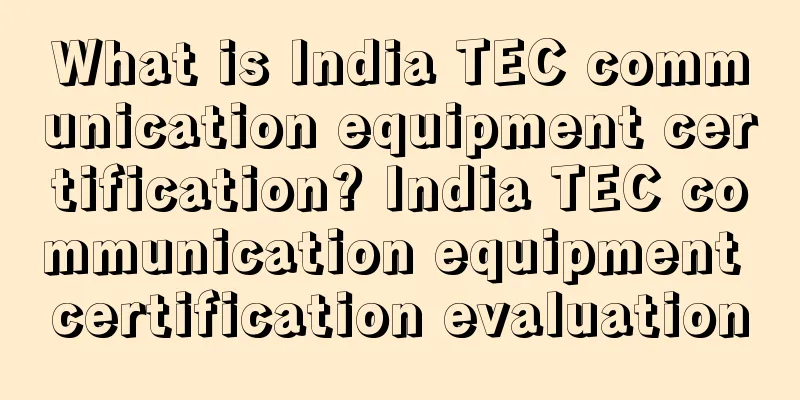What is equity incentive? Equity incentive evaluation

|
Equity incentive, also known as option incentive, is a long-term incentive mechanism implemented by enterprises to motivate and retain core talents. It is one of the most commonly used methods to motivate employees. Equity incentives mainly grant employees part of shareholder rights under certain conditions, so that they have a sense of ownership and form a community of interests with the company, promoting the common growth of the company and employees, and thus helping the company achieve its long-term goal of stable development. Basic Concepts Equity incentive is a method in which an enterprise uses part of its equity to motivate senior management or outstanding employees. Generally, it is an incentive with attached conditions, such as employees must work for a certain number of years in the enterprise or achieve specific goals before they are given incentives. When the incentivized personnel meet the incentive conditions, they can become shareholders of the company and enjoy shareholder rights. In the early stages of a startup’s development, funds are relatively tight, and the biggest problem caused by insufficient funds is the loss of personnel, especially senior management and core employees of the team. Their loss will have an immeasurable impact on the startup. In order to improve team cohesion and retain management and core employees with limited salaries, entrepreneurs racked their brains and slowly developed a system that uses company equity as the target to provide long-term incentives to other members of the company, including senior management and core employees, namely equity incentives. model 1. Performance Stocks It means setting a reasonable performance target at the beginning of the year. If the incentive object reaches the predetermined target by the end of the year, the company will grant it a certain number of stocks or extract a certain amount of bonus funds to purchase company stocks. The circulation and realization of performance stocks are usually subject to time and quantity restrictions. Another long-term incentive method similar to performance stocks in operation and function is performance units. The difference between it and performance stocks is that performance stocks are granted in stocks, while performance units are granted in cash. 2. Stock Options It refers to a right granted by the company to the incentive object. The incentive object can purchase a certain number of the company's circulating stocks at a predetermined price within a specified period, or it can give up this right. The exercise of stock options is also subject to time and quantity restrictions, and the incentive object must pay cash for the exercise. The virtual stock options used in some listed companies in China are a combination of virtual stocks and stock options, that is, the company grants the incentive object a virtual stock subscription right, and the incentive object obtains virtual stocks after exercising the right. 3. Virtual Stocks It means that the company grants a virtual stock to the incentive object, through which the incentive object can enjoy a certain amount of dividend rights and stock price appreciation benefits, but has no ownership, no voting rights, cannot be transferred or sold, and will automatically expire when the incentive object leaves the company. 4. Stock appreciation rights It refers to a right granted by the company to the incentive object. If the company's stock price rises, the incentive object can obtain a corresponding amount of stock price appreciation benefits by exercising the right. The incentive object does not need to pay cash for exercising the right, and will receive cash or equivalent company stock after exercising the right. 5. Restricted Stock It means that a certain number of company stocks are granted to the incentive object in advance, but there are some special restrictions on the source and sale of the stocks. Generally, the incentive object can only sell the restricted stocks and benefit from it after completing specific goals (such as turning losses into profits). 6. Delayed Payment It means that the company designs a package of salary income plan for the incentive targets, part of which is equity incentive income. The equity incentive income is not paid out in the same year, but is converted into the number of shares according to the fair market price of the company's stock. After a certain period of time, it is paid to the incentive targets in the form of company stock or in cash based on the stock market value at that time. 7. Manager/Employee Stock Ownership It means that the incentive object is allowed to hold a certain number of the company's stocks, which are donated by the company for free, subsidized by the company, or purchased by the incentive object at its own expense. The incentive object can benefit when the stock appreciates and suffer losses when the stock depreciates. 8. Management/Employee Buyout It means that the company's management or all employees use leveraged financing to purchase the company's shares, become shareholders of the company, share risks and benefits with other shareholders, thereby changing the company's equity structure, control structure and asset structure, and realizing shareholding management. 9. Book value appreciation rights There are two types: purchase type and virtual type. Purchase type means that the incentive object actually purchases a certain number of company shares at the net asset value per share at the beginning of the period, and sells them back to the company at the end of the period at the net asset value per share. Virtual type means that the incentive object does not need to spend money at the beginning of the period, and the company grants the incentive object a certain number of nominal shares. At the end of the period, the income of the incentive object is calculated based on the increase in the company's net assets per share and the number of nominal shares, and cash is paid to the incentive object accordingly. The first to eighth types mentioned above are equity incentive models related to the securities market. In these incentive models, the benefits obtained by the incentive targets are affected by the company's stock price. The book value appreciation right is an equity incentive model that has nothing to do with the securities market. The benefits obtained by the incentive targets are only related to one of the company's financial indicators - net asset value per share, and have nothing to do with the stock price. References |
<<: What is Wayfair? Wayfair Review
>>: What is WOTOKOL? WOTOKOL Review
Recommend
Trump will be officially inaugurated on January 20, 25 years later, Biden and Harris promise a peaceful transition
It is learned that recently, according to foreign ...
The first wave of people using DeepSeek to "do cross-border" appeared
Around the Spring Festival, the "mysterious p...
Sellers will witness history? Euro exchange rate explodes! Is it difficult to raise prices?
▶ Video account attention cross-border navigation ...
Labor Day sales are sluggish again! The unemployment assistance program has ended, and nearly 9 million Americans are "poor"?
On the first Monday of September, Americans celebr...
Best Buy's Q3 revenue is $9.45 billion, and it lowers its full-year performance forecast
It is learned that on November 26, the US retail g...
What is Amazon Storefronts? Amazon Storefronts Review
Amazon Storefronts is an exclusive landing page fo...
What is Papaya Mobile? Papaya Mobile Review
Beijing Papaya Mobile Technology Co., Ltd. (Papaya...
Another e-commerce giant falls! US grocery platform Boxed files for bankruptcy protection!
It is learned that according to foreign media repo...
Another batch of common words were scanned, and the seller modified the listing overnight!
“ The closer Prime Day gets, the bigger the moves ...
How to advertise a new product?
Many people encounter the same situation as you w...
One year after Andy Jassy took over as CEO, Amazon's direction has changed
On July 5, 2021, Amazon founder Bezos officially s...
How to properly direct traffic to Amazon?
1. Focus on the site, supplemented by external si...
What is an Amazon Removal Order? Amazon Removal Order Review
Removal order is Amazon's request to sellers t...
Home Furnishings Selling as a "Part-time Freight Forwarder"? Earning Hundreds of Millions by Operating Overseas Warehouses!
It is learned that on April 20, Matson Shipping is...
Mexico's e-commerce growth rate is the fastest in the world! Where are the opportunities for cross-border e-commerce?
According to the latest data from the Mexican Onli...









